Sony X85L is a model from 2023 that will be continued in the offering for 2024 by the Japanese manufacturer. Its greatest advantage is the Google TV system. It currently provides the largest access to applications, so we need not worry that one of our favourite applications will be missing. The intuitive interface and voice control feature using Google Assistant make daily use of the television comfortable and modern. As for picture quality, Sony X85L performs well. Thanks to local dimming (albeit with a very average number of zones), black levels look quite decent. Additionally, its fairly high brightness allows for comfortable television viewing during the day, even in well-lit rooms. Furthermore, the television offers a programme recording function with built-in tuners, which is a great convenience for those wanting to control what and when they watch. In terms of motion smoothness, X85L does not disappoint either. The 120 Hz panel and Motionflow system ensure smooth display of dynamic scenes, satisfying both movie enthusiasts and sports fans. The television is also equipped with a range of features for gamers, including VRR, Game Bar and G-Sync support, making it an attractive choice for gaming enthusiasts. Of course, the television is not without its faults. The lack of HGiG support and high input lag in Dolby Vision mode can be disappointing for more demanding gamers. Additionally, the compromise between font readability and image smoothness when connected to a PC may not appeal to everyone. Nevertheless, Sony X85L is a decent piece of equipment that is particularly worth attention if it can be purchased on promotion.
- Matching (Score)
- Our verdict
- TV appearance
- Where to buy
- Contrast and black detail
- HDR effect quality
- Factory color reproduction
- Color reproduction after calibration
- Smoothness of tonal transitions
- Image scaling and smoothness of tonal transitions
- Blur and motion smoothness
- Console compatibility and gaming features
- Input lag
- Compatibility with PC
- Viewing angles
- TV efficiency during daytime
- Details about the matrix
- TV features
- Apps
- Playing files from USB
- Sound
Sony X85L vs Samsung S85F OLED
Direct compare
X85L
S85F / FAE / FAU

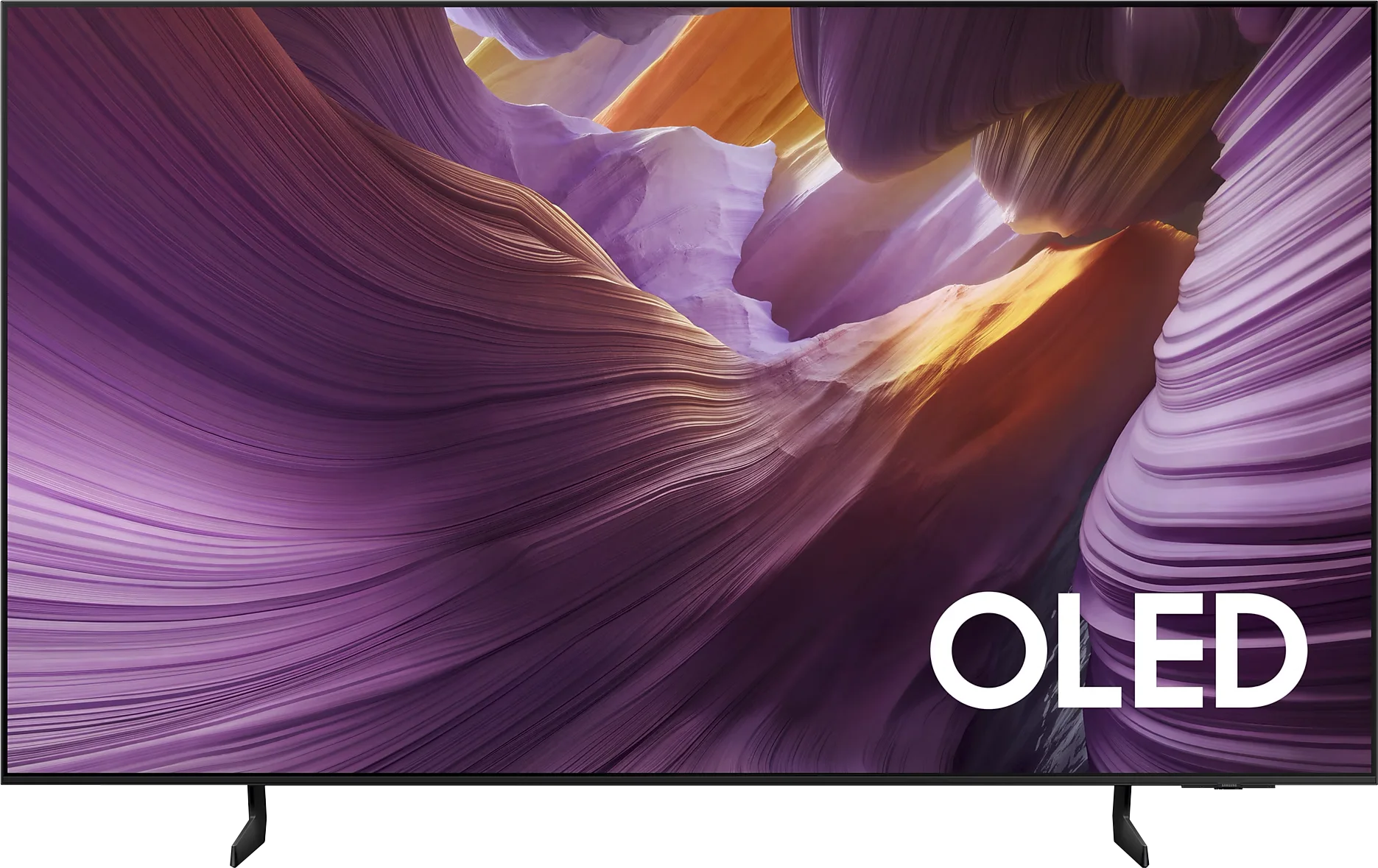
Resolution: 3840x2160
System: Google TV
Model year: 2023
Complete the survey to find out the result

Panel type: QD-OLED
Resolution: 3840x2160
System: Tizen
Model year: 2025
Complete the survey to find out the result

Overall rating
6.9
8.0
Movies and series in UHD quality
6.4
8.3
Classic TV, YouTube
6.3
9.0
Sports broadcasts (TV and apps)
6.6
8.8
Gaming on console
7.8
9.3
TV as a computer monitor
5.6
7.6
Watching in bright light
6.5
5.1
Utility functions
7.7
7.3
Apps
9.6
8.7
Sound quality
6.9
7.2
Complete the survey to find out what fits your preferences
Advantages
Advanced Google TV System
Good contrast
Good brightness
Features for gamers - VRR, Game Bar and G-Sync
Base with adjustable legs
Amazing black and contrast
Incredible colour palette coverage thanks to the QD-OLED matrix
Great picture in SDR and HDR content
High colour fidelity after calibration
Very good image smoothness – 120 Hz OLED matrix
Rich set of features for gamers: VRR, Game Bar, low input lag
4 HDMI 2.1 ports with full bandwidth of 48 Gbps
Advanced and smoothly operating Tizen system
Solar Remote with multiple options
Disadvantages
No support for HGiG, Dolby Vision with high input lag
Font readability issues on PC at 120 Hz
Only 2 HDMI 2.1 ports - with one serving as eARC
No recording function on USB and PiP
No Dolby Vision
Slightly cherry black in very strong external light (not noticeable when viewing in cinema conditions)
No HGiG function*
* This function disappeared with the software update 1110.7 – we are monitoring this situation continuously.
Our verdict
Samsung S85F with a QD-OLED panel can surprise – and it surprises very positively. Even before the tests, we didn't think that in the case of TVs that are talked about in the context of "panel lottery," one could come across something that would benefit the user. However, in this case, particularly in the 55-inch version, it has fully succeeded. The QD-OLED panel, as befits organic technology, offers perfect, almost ideal black and contrast in cinematic conditions. The difference lies, however, in the way colours are reproduced – here it is simply outstanding. The colour gamut coverage is impressive, and after a gentle calibration, the colours become almost exemplary. Motion fluidity is equally high. The 120 Hz panel handles both sports and action films excellently. And if someone plans to connect a console to the S85F, they will receive a complete set of advantages: low input lag, variable refresh rate, Game Bar, and full support for HDMI 2.1. In everyday use, we were assisted by the Tizen system – closed, but extremely well-designed. It responds quickly, offers a rich selection of applications, and add-ons such as AirPlay and voice control make it hard to find something more complete in this category. Indeed, the S85F is not without its flaws. However, the balance of advantages and disadvantages is exceptionally favourable here. One could even get the impression that it is one of the best TVs in its price segment.
TV appearance





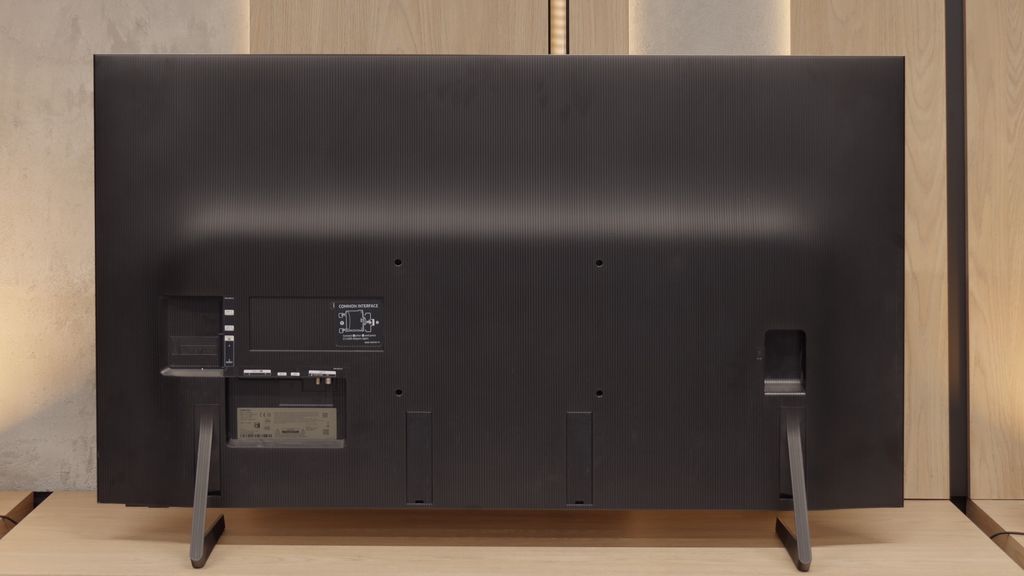
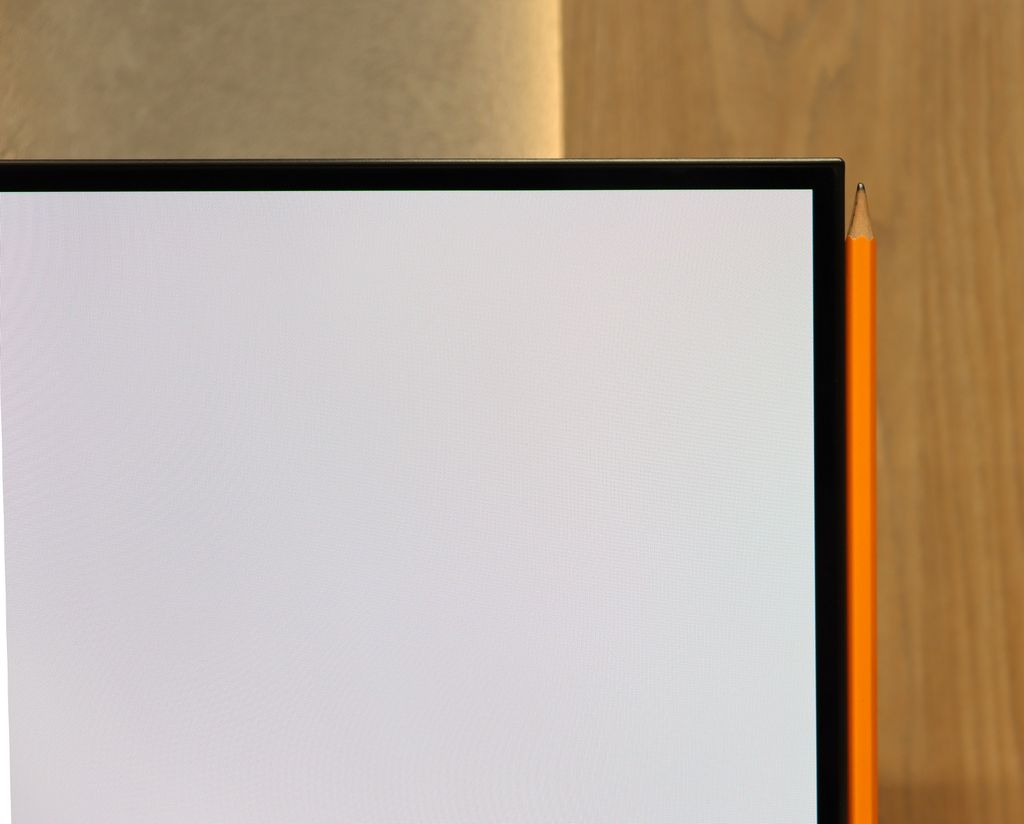

Contrast and black detail
6.7/10
10/10
Local dimming function: Yes, number of zones: 24 (4 x 6)
Contrast:

Result
8,700:1

Result
7,800:1

Result
19,200:1

Result
5,750:1

Result
5,150:1

Result
∞:1

Result
∞:1

Result
∞:1

Result
∞:1

Result
∞:1
Halo effect and black detail visibility:

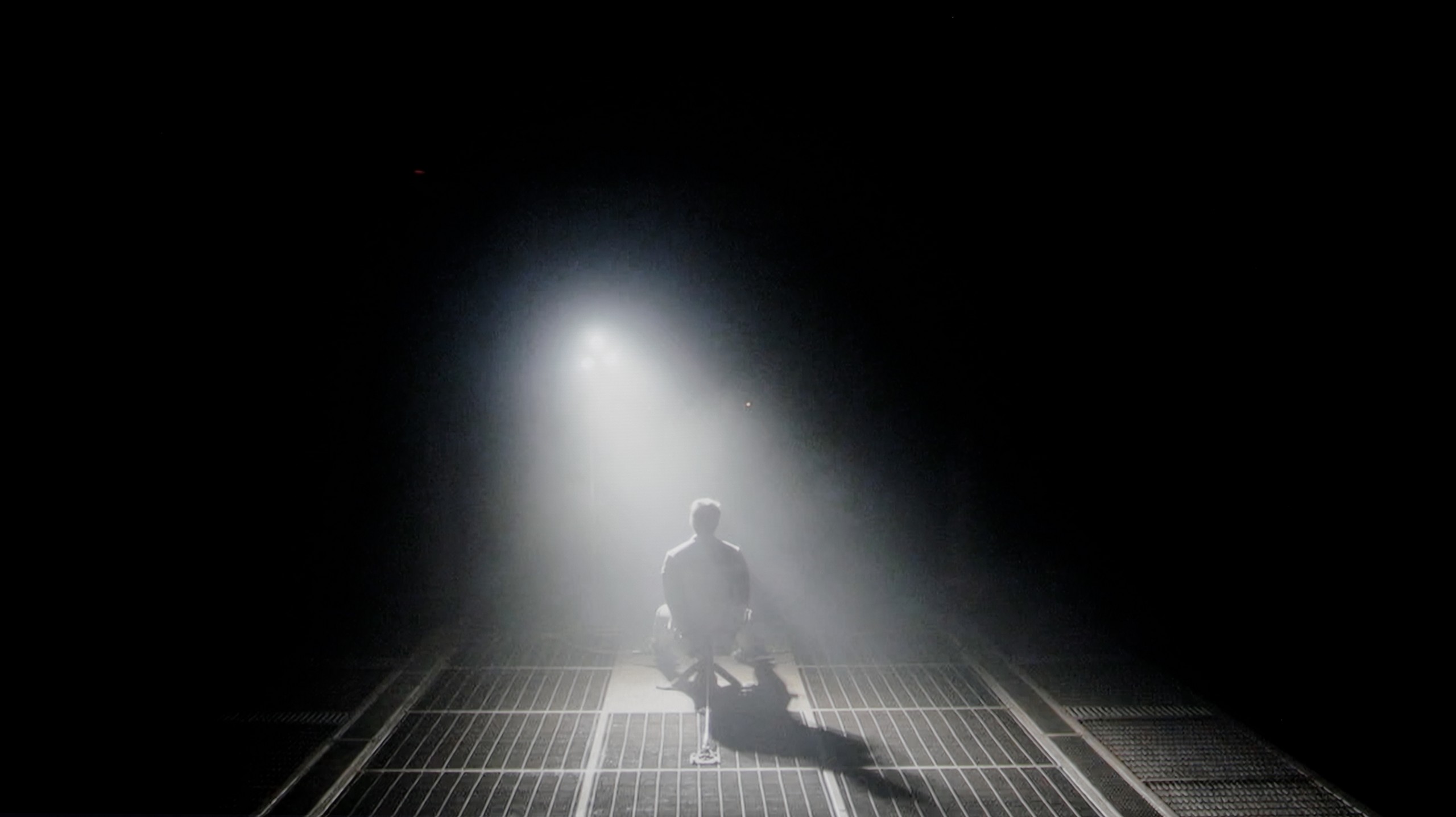
The Sony X85L television is equipped with a VA panel, which in itself offers quite good contrast. Additionally, this model features local dimming technology – in the 55-inch version, it encompasses 24 zones. Although this number is not impressive, it naturally increases with the size of the television. The contrast in the X85L is good, though not the best, especially in comparison to other televisions also equipped with advanced local dimming technology. Results at a level of 8000:1 are satisfactory, but appear average in the context of competition. In some cases, such as the third scene from the film Arrival, the contrast is promising and performs fairly well. This is thanks to the very good dimming algorithm that Sony has employed in its televisions for years. Unfortunately, due to the limited number of local dimming zones, the television struggles with noticeable blooming, which can be observed, for example, in scenes with the helicopter from the film Sicario 2.
The Samsung S85F in the 55-inch version has something exceptional about it – it features a QD-OLED panel. This may sound quite surprising, but it is a fact, at least in Poland. Thus, the question arises: is the difference noticeable compared to last year's S85D with a WOLED panel? Yes, although in this particular test – black levels and contrast – it hardly matters.
Regardless of the scene, the S85F delivers infinite contrast and perfect blacks that we expect from any OLED. These are results that can impress even the most demanding cinema enthusiasts. It's worth remembering that such deep blacks can only be offered by TVs with organic panels – and it doesn't matter whether it's WOLED or QD-OLED. So, if you dream of a screen that can "turn off" the light in a scene just as effectively as an art house cinema in a dark room, the S85F is one of those TVs.
HDR effect quality
5.8/10
6.2/10
Luminance measurements in HDR:

Result
736 nit

Result
415 nit

Result
535 nit

Result
249 nit

Result
599 nit

Result
666 nit

Result
703 nit

Result
742 nit

Result
732 nit

Result
433 nit
Scene from the movie “Pan” (about 2800 nits)


Scene from the movie “Billy Lynn” (about 1100 nits)


Static HDR10


Dynamic: Dolby Vision
Dynamic: HDR10+


HDR luminance chart:
Samsung S85F OLED
HDR luminance
Sony X85L
HDR luminance
The Sony X85L television offers solid HDR performance with a brightness level of 750 nits, which is sufficient to enjoy vivid effects. In scenes of moderate difficulty, such as the first, third, or fifth test scenes, a brightness of around 600 nits allows one to fully experience the HDR effect. Unfortunately, in more demanding segments, like the scene from the film Sicario 2, the television reveals its limitations. Drops in brightness to 250 nits cause the HDR effect to lose its impressive quality, resembling rather ordinary SDR. Nevertheless, it is worth highlighting the very good coverage of the DCI-P3 colour palette at 95%, which definitely deserves praise and positively impacts the overall image quality.
For an OLED, the Samsung S85F can truly shine – literally. Under favourable conditions, it is capable of generating brightness exceeding 750 nits. This is hugely significant, as most films are created with displays reaching around 1000 nits in mind. In practice, this means that in scenes with moderately large, bright elements, the image can look simply fantastic. However, it's not always so rosy. When there is a huge amount of light on the screen – whether it's an expansive, bright background or a whole frame filled with white – the S85F has to tone it down. In such scenes, brightness can drop by even four times. This limitation is well-known to essentially every OLED in this price segment, so we do not consider it a particular shortcoming. However, something that deserves praise and sets this model apart from the competition is its colour gamut coverage. Thanks to the QD-OLED panel, our colourimeter recorded values exceeding 100% DCI-P3 coverage and as much as 86% for the ultra-wide BT.2020 gamut. Such results are hard to find even in televisions costing several times more.
Factory color reproduction
5.8/10
5.5/10


Factory Mode
After calibration


Factory Mode
After calibration
The television Sony X85L was tested in IMAX Enhanced mode, which, although associated with world-class cinema, does not guarantee an image that aligns with the director's intention. The main problem is the white balance – there is a noticeable strong dominance of blue colour and significant shortcomings in red. As a result, the picture becomes unnaturally cool and looks artificial. Errors in colour reproduction were confirmed by the Colour Checker test, which showed considerable discrepancies – the colours were "scattered" like shots from a rifle, and only a few samples hit the target values. This clearly demonstrates that the accuracy of colour reproduction leaves much to be desired.
The brightness of the image is one of the positive features of the television. The gamma for HD content is at an acceptable level, although there are minor errors, but generally it is quite good. However, the characteristic of brightness for 4K materials remains a problem, controlled by the EOTF curve. It is evident here that very small, bright elements of the image are too dim, which is the result of the limited number of backlighting zones due to the design of the television.
Samsung, as befits a manufacturer with ambitions, has equipped the S85F with a mode called Filmmaker. Its task is simple: to ensure that the colours on the newly purchased television are as true to what the director intended as possible. Sounds great… but, as is often the case, a theory that sounds great does not always translate into perfect practice.
In the tested unit, it quickly became apparent that the image – due to an excess of blue and red – looked as though someone had overdone the saturation a bit. As a result, quite significant colour errors occurred, particularly in 4K content. Moreover, there was a problem with brightness – the S85F could brighten most scenes more than it should, taking away their intended mood.
Fortunately, Samsung televisions, including the S85F, offer an impressive number of settings for advanced calibrators. This means that we could test what this panel is truly capable of when placed in the right hands.
Color reproduction after calibration
7.5/10
9.3/10




Thanks to the application of calibration tools offered by Sony X85L, the image quality has been significantly improved. After calibration, the white balance for HD content is much more stable, making colours appear more natural and enhancing the authenticity of the image. Although it is not perfect, these changes allow viewers to enjoy a more realistic colour reproduction, eliminating the previous cool tone. The gamma, which was already decent, has been adjusted to an even better version. As a result, tonal transitions and brightness are more consistent, positively affecting the depth and detail of the image.
As for 4K content, despite efforts, the white balance still struggles with a lack of red, which can lead to overly warm colours in some scenes. Synthetic tests showed that the EOTF curve in HDR is quite stable, with a slight enhancement in mid-bright scenes. However, in actual film material, the television can still be too bright with fine, light details, which is a result of the limitations of large local dimming technology.
Nevertheless, calibration has brought significant benefits, particularly in terms of colour accuracy, improving the overall image quality and providing a more natural and cohesive directorial vision.
Thanks to the vast number of settings in the menu, we managed to bring the S85F to nearly an ideal level. The white balance in SDR content? Literally perfect – deviations do not exceed the value of “1”. So we can confidently say that in materials with not very high dynamics, we have an image close to reference here.
In HDR content, slight issues have arisen, but they are not significant in practice – most errors fall below the threshold of perceptibility, which is the value of “3”. We also managed to tame the S85F when it comes to brightness management – the EOTF curve, even in movies, holds an almost perfect line. This is one of those cases where after calibration, you can comfortably forget about the settings and simply enjoy films and series at the highest level.
Smoothness of tonal transitions
7.1/10
7.9/10












The fluidity of tonal transitions in Sony X85L is at a good level – the gradation of colours is smooth, even in more demanding areas, which makes the perception of scenes positive and natural. The biggest issues arise around shadows, where subtle colour joins may be visible. Despite this, the television performs well enough that most viewers should not notice these minor imperfections.
Thanks to the QD-OLED panel, the colour blending on the S85F performs really very well. It is particularly worth noting how it handles the darkest, most demanding scenes – where most televisions start to struggle, this model operates almost perfectly.
Interestingly, a slight stumble can be noticed in those easier, brighter shots. There is then a minimal banding of colours, but it is so subtle that it is hard to believe it would realistically interfere with anyone's viewing experience.
Image scaling and smoothness of tonal transitions
6/10
7/10
Smooth transition function

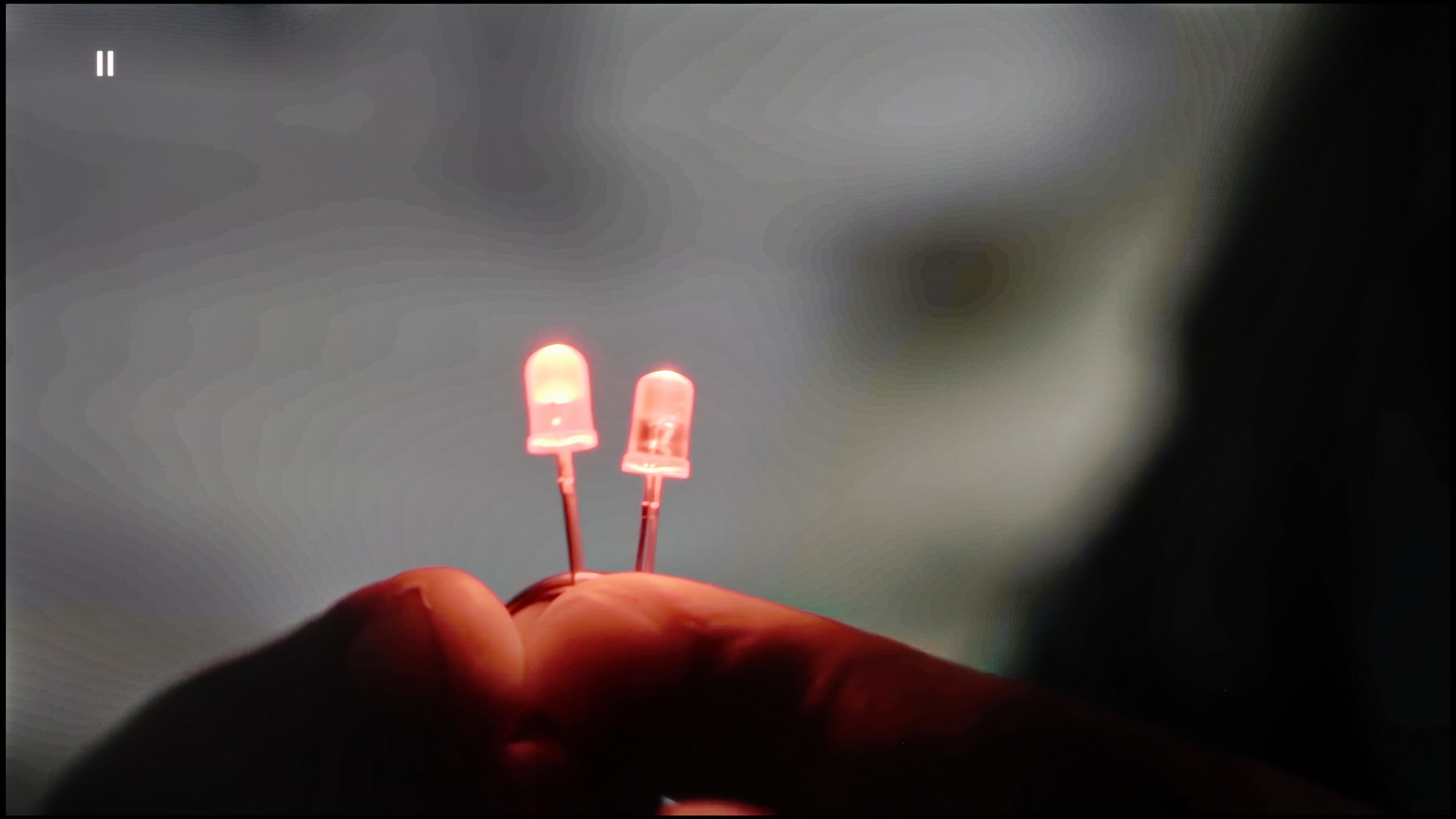
Image without overscan on the SD signal


In terms of smoothing tonal transitions, the Sony X85L television does not offer any dedicated enhancement options, which is a certain drawback. On the other hand, the image scaling performs quite well – the television adds a bit of artificial sharpness, which may make details such as tree branches more pronounced, although sometimes with noticeable jagged edges. This type of effect may appeal to some viewers who prefer a more detailed image.
The tonal transition smoothing function in the S85F works really effectively – it can completely eliminate the problem of visible banding in very poor quality materials, such as those from YouTube. Unfortunately, even the lowest level of this option comes with compromises. Noise reduction is aggressive enough that it can smooth out the film grain that many of us consider a key element of the cinematic experience. At the "Standard" level, we did not notice that this function removed anything significant from the image, so we can recommend this setting. On the other hand, the "High" level is a different story – it can smooth out not only noise but also subtle, desirable details such as the texture of objects.
As for image scaling, the S85F performs very well. The material looks sharp, and the only minor imperfection is slightly visible aliasing of contours. And there’s still the persistent issue with Samsung televisions – overscan. This can cause the frame to be slightly cropped in certain scenes, which is worth keeping in mind when watching very old content.
Blur and motion smoothness
8/10
8.5/10

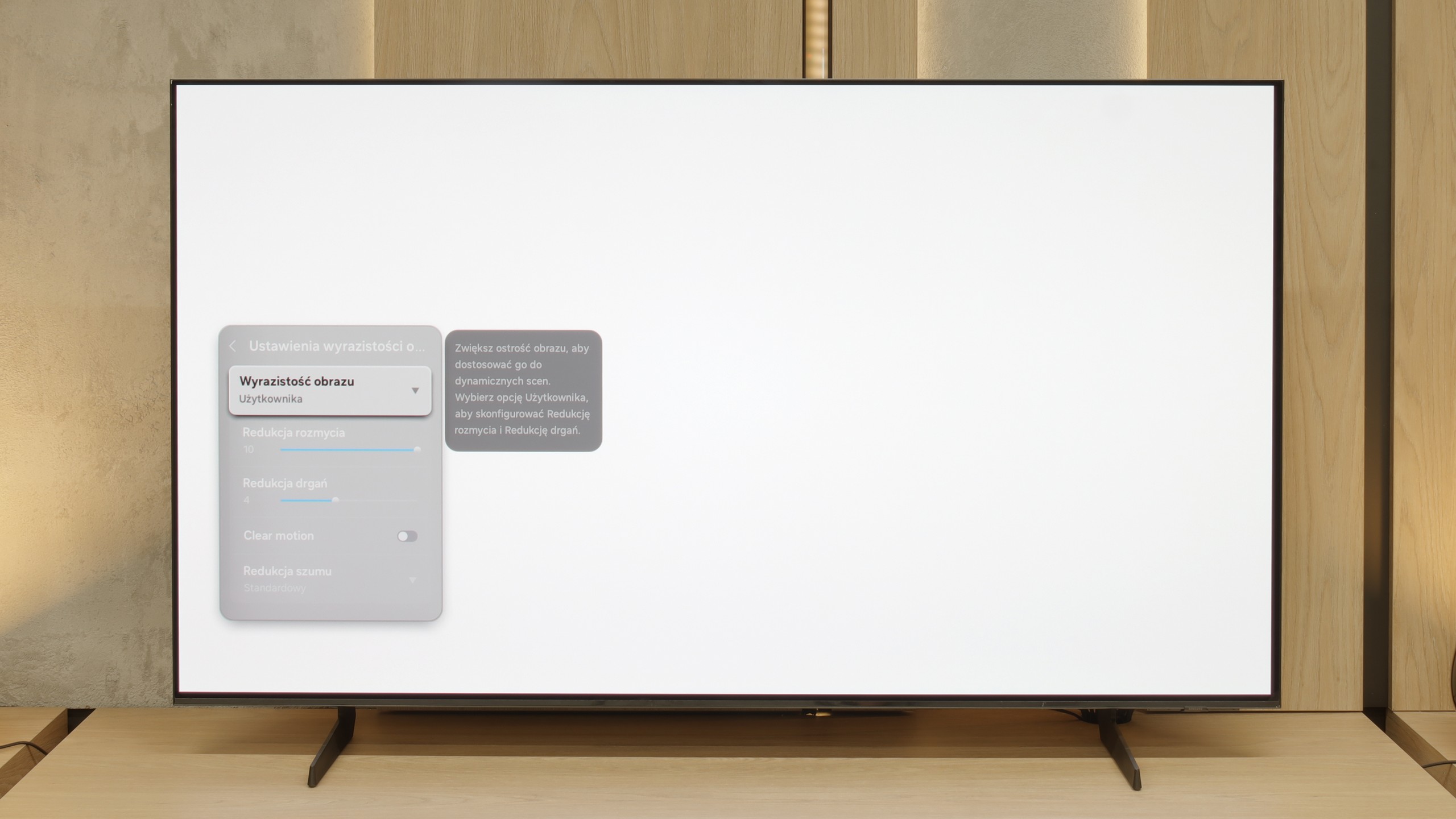
Blur (native resolution, maximum refresh rate):






Blur (BFI function enabled):



Image flickers in this mode



Smużenie ():
Smużenie (4K@60Hz Game Motion Plus):



Sony X85L, equipped with a 120 Hz panel, will meet the expectations of a wide range of users – from sports and gaming fans to movie enthusiasts. Movie buffs will certainly appreciate the presence of one of the best motion smoothing systems, known as Motionflow. This system offers adjustment through sliders for smoothness and clarity – smoothness is responsible for motion fluidity, eliminating judder, while clarity improves the sharpness of fast scenes, reducing blur.
The S85F is a mind-blowingly fast television – and this is not just an empty phrase for effect. Thanks to the 120 Hz OLED panel, dynamic scenes, whether in games or while watching a live match, look exactly as they should – smoothly, sharply, and without the feeling that something is “slipping away” from the frame. The lightning-fast pixel response time, typical of OLEDs, plays its part here. Transitions between frames are virtually instantaneous, and the picture remains clear even during the fastest camera movements. A ball flying across half the pitch? A car racing in a chase scene? Here, everything is clear and free from the characteristic “trail” of LCDs.
This is exactly what we expect from a good OLED – no compromises when it comes to motion fluidity. The S85F gives the impression that regardless of the pace of the action, we can focus on what is happening on the screen, rather than the imperfections of the image.
Console compatibility and gaming features
7.8/10
8.2/10
- ALLM
- VRR
- VRR range48 - 120Hz48 - 120Hz
- Dolby Vision Game Mode
Yes, high input lag
- Correct implementation of HGIG
- 1080p@120Hz
- 1440p@120Hz
- 4K@120Hz
- Game bar

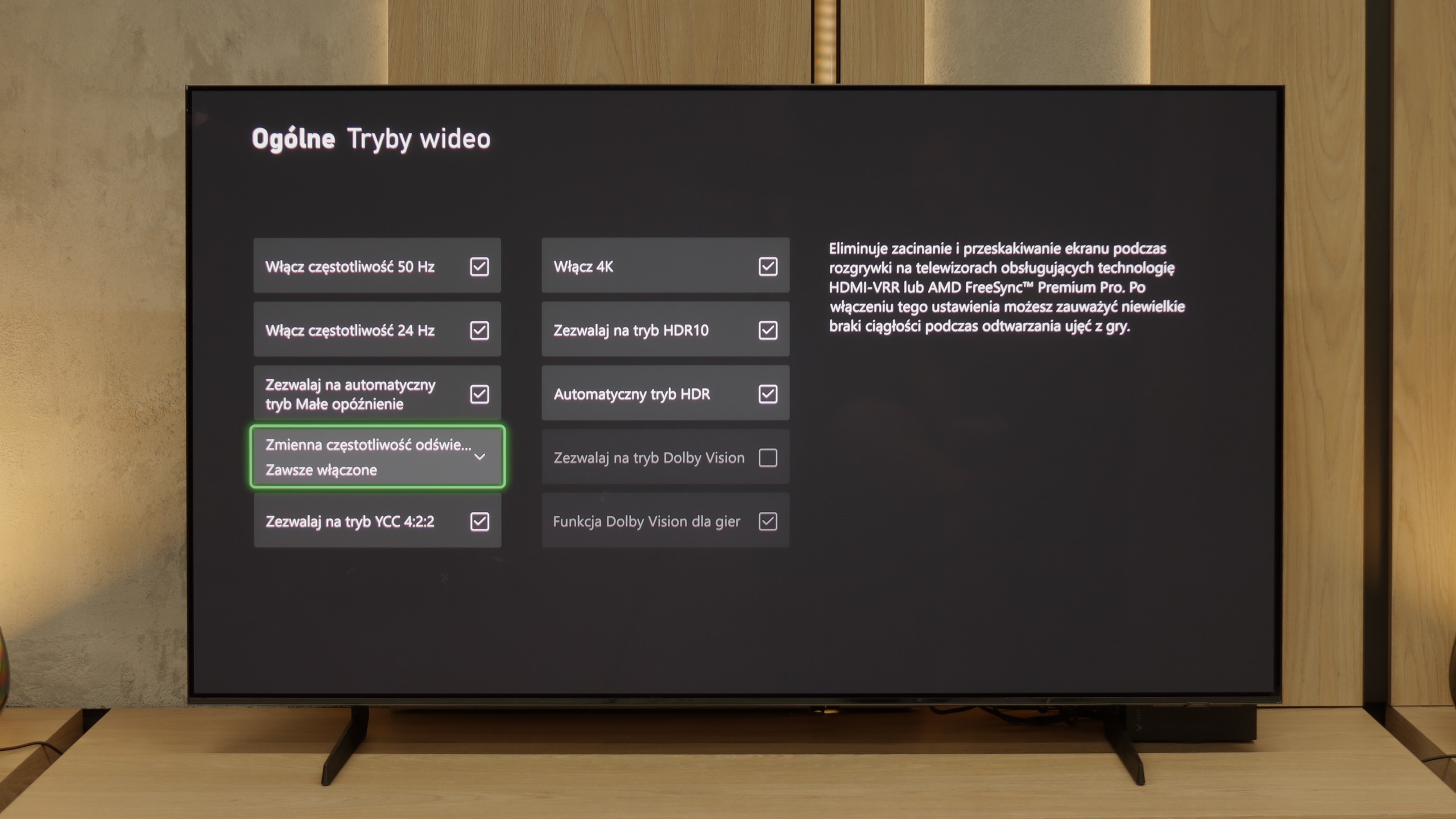

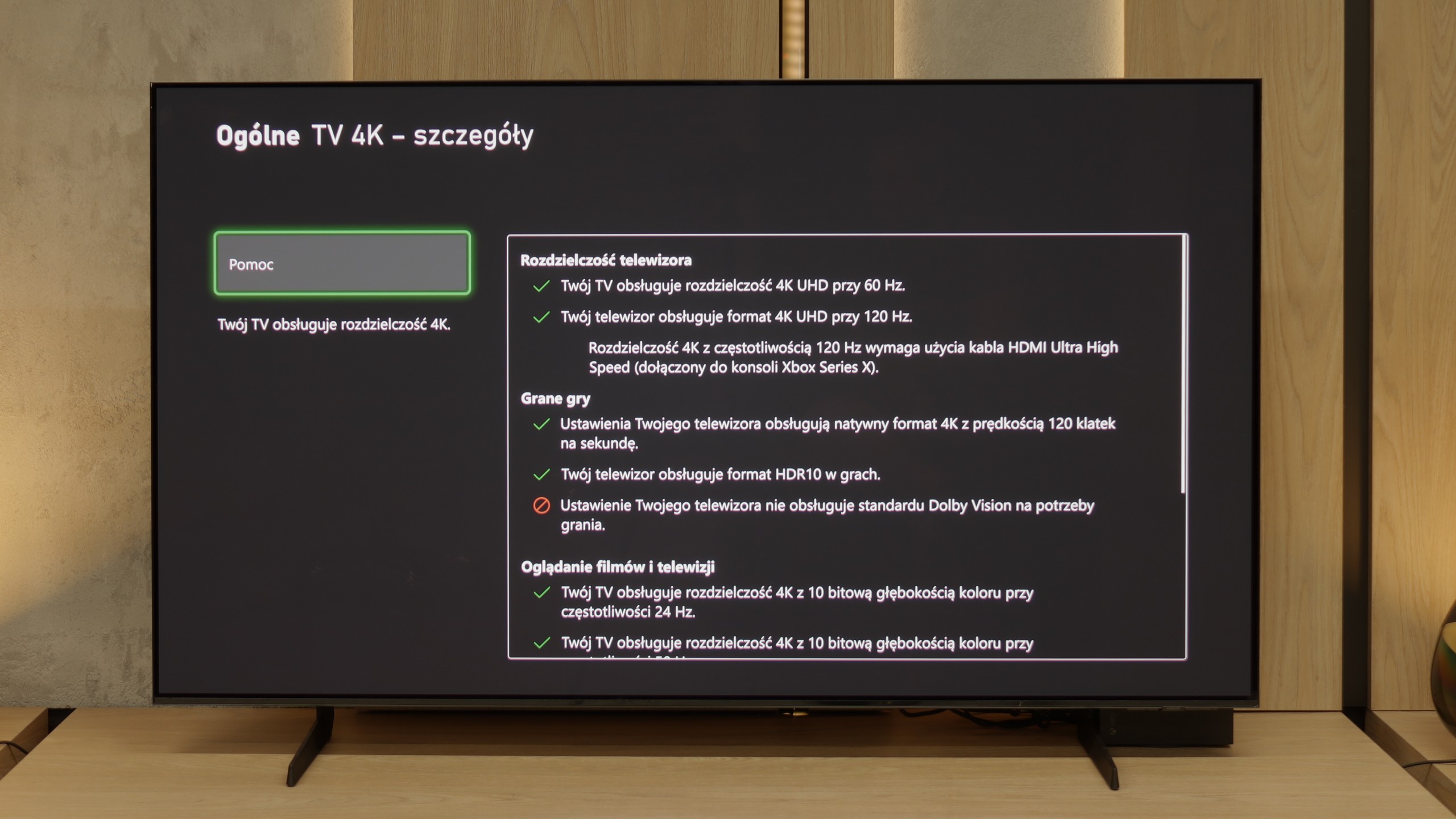

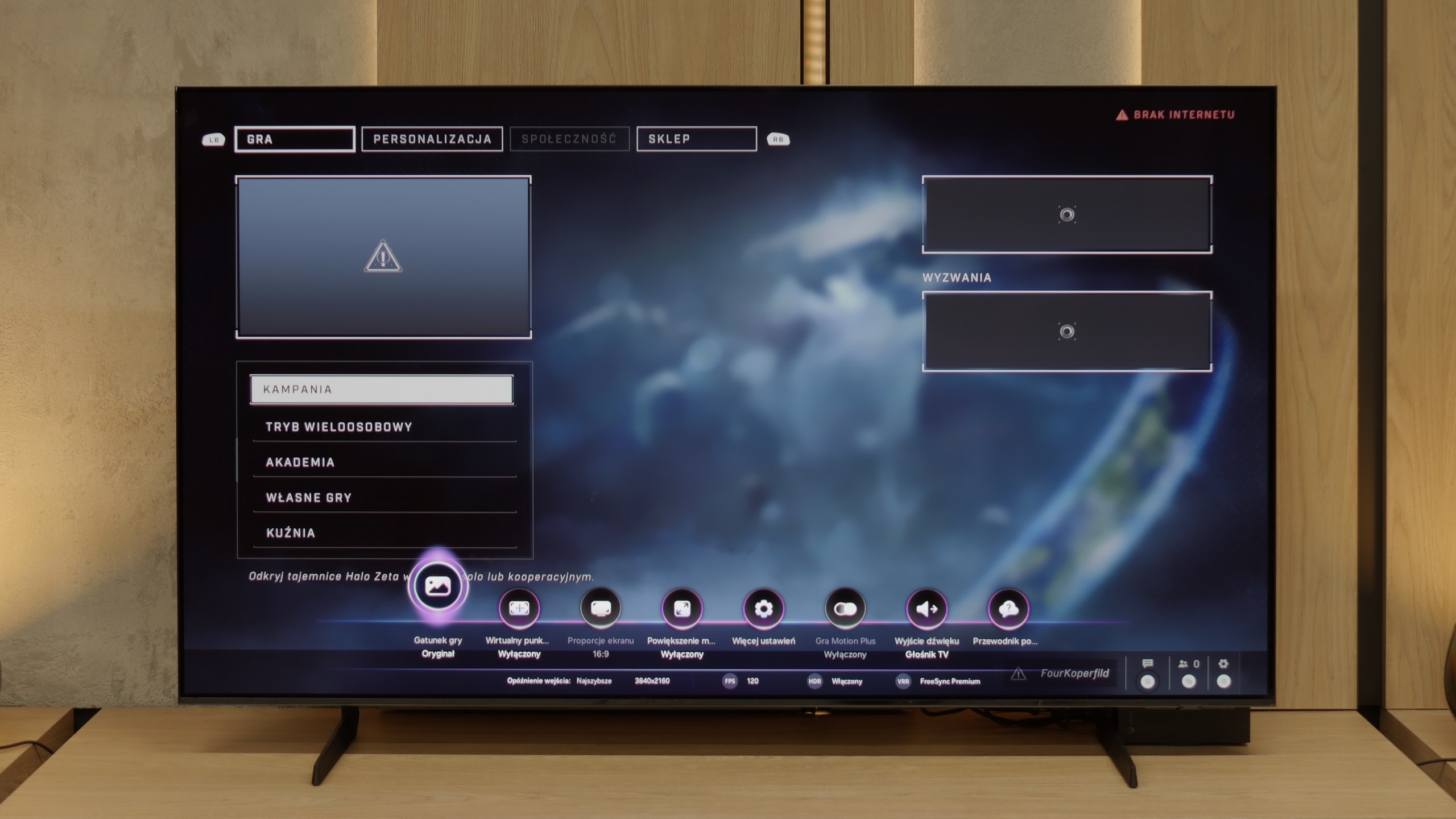


Sony X85L offers a quite solid set of features for gamers, making it an attractive choice for gaming enthusiasts. First and foremost, the television has a 120 Hz panel, which translates to smooth and dynamic image display, ideal for both fast-paced action games and more demanding sports titles. It is equipped with two HDMI 2.1 ports with full bandwidth of 48 Gb/s, allowing for the full utilisation of next-generation consoles. Additionally, Sony X85L supports VRR (Variable Refresh Rate) technology, which helps reduce stuttering and artifacts during gameplay, providing a smooth experience. The television also supports G-Sync, which is particularly beneficial for gamers using NVIDIA graphics cards, allowing for the synchronisation of the screen refresh rate with GPU performance, eliminating screen tearing. It is worth mentioning the Game Bar feature, which facilitates quick access to the most important gaming-related settings, such as VRR, brightness levels, and display modes, which is convenient and useful during gameplay.
However, there are certain limitations. The television does not support HGiG, which may be a downside for some gamers, as HGiG optimises HDR effect rendering in games, providing a more authentic visual experience. Additionally, while the Dolby Vision mode is available, it is not practical for gaming due to the very high input lag.
The S85F has practically everything on board to become the dream screen for gaming. Four full-fledged HDMI 2.1 ports with a bandwidth of 48 Gb/s, support for VRR, ALLM, a super-detailed Game Bar that clearly shows all parameters – and on top of that, a gem in the form of Game Motion Plus. This motion smoother makes animation in games more enjoyable, while input lag only increases slightly. This is a rare combination, and it’s a big plus for Samsung.
Now comes the moment when we need to complain a little. The lack of Dolby Vision in Samsung televisions has become standard, so there’s no point in hoping (unless something changes in a few years) – but the disappearance of HGiG after the software update is something hard to explain. HGiG (which stands for HDR Gaming Interest Group) is a mode that allows for precise reproduction of brightness in HDR games, in accordance with the creators' intentions. Without it, HDR calibration on a console becomes less precise, so we can end up with an image that is too dark in the shadows or excessively overexposed.
Perhaps Samsung will fix this in the next update – and we have high hopes for that. Because if HGiG returns, the S85F will become nearly the perfect television for gamers.
Input lag
9.1/10
10/10
SDR
HDR
Dolby Vision
Generally speaking, the input lag on the Sony X85L is very good, which is crucial for smooth gameplay and quick reactions in games. In standard modes, especially when using HDMI 2.1 and playing at a resolution of 4K at 120 Hz, the input lag is minimal.
Unfortunately, the Dolby Vision mode is an exception to this rule. In this case, the input lag reaches as much as 95 ms. Such a high level of delay makes the Dolby Vision mode virtually unplayable, as the responses to commands are noticeably delayed.
Here, dear players, the S85F shows its claws. 5 ms for 120 Hz content and around 10 ms for 60 Hz are results that can be described in one word in the world of televisions – phenomenal. This means that the reaction to our movements is practically instantaneous. We press the button, and the action on the screen happens without any delay, as if the television is reading our minds. In dynamic games, where a fraction of a second can decide victory or defeat, such values make a huge difference. There is no question of nervously "waiting" for the image to catch up with our movements. The S85F gives us the feeling that everything is completely under our control – and that is how it should be with equipment that aspires to be the perfect screen for gamers.
Compatibility with PC
5.6/10
7.6/10


The collaboration of the television Sony X85L with a PC is a bit of a balance between image quality and user comfort. If we want to use the television for work, where clear fonts matter, we need to set the refresh rate to 60 Hz. In this mode, the text looks good and doesn't strain the eyes, which is crucial if we intend to spend a longer time in front of the screen.
On the other hand, if the television is to be used for gaming, where we can take full advantage of its capabilities at 120 Hz, we must bear in mind that the readability of fonts noticeably decreases. The image becomes less sharp, and the text harder to read, which can be frustrating. In short – Sony X85L will perform well for occasional connections to a computer, but if we need it on a daily basis for work and gaming, this compromise may not appeal to everyone.
If you are planning to connect the S85F to a computer, we have good news – this television is great for that. Low input lag and a 120 Hz panel make gaming on PC a pure pleasure. Whether we are talking about dynamic shooters or more tranquil RPGs, the response is instant, and the fluidity of the animations can captivate you for hours.
Of course, there's no rose without thorns. Due to the diamond arrangement of the pixels in the QD-OLED panel, there is a slight effect of "rainbow icons", particularly noticeable when sitting close to the screen. Fortunately, this is rather a detail that most of you will not find bothersome in everyday use. Especially since, thanks to the correct implementation of chroma 4:4:4, the readability of fonts is at a very good level – documents, websites, and text editors look exactly as they should.
Viewing angles
3/10
9.8/10
The viewing angles on the Sony X85L, as is often the case with VA panels, are not the best. The picture looks great when viewed directly, but as soon as you move to the side, you notice that the colours lose intensity and the contrast significantly weakens. This can be an issue if the television is meant for viewing in larger groups, where viewers are seated at different angles. For those who usually watch solo or from one central spot, this won’t be a major downside, but when watching from the side, the picture quality unfortunately declines.
Here, dear readers, the S85F reaches absolute peak performance. The viewing angles are phenomenal – one of the best you can get in a television today, thanks to the unique QD-OLED panel from Samsung Display. Of course, WOLED panels can also maintain a high level in this regard, but let's not kid ourselves – what the QD-OLED in the S85F demonstrates leaves an even greater impression. The colours, contrast, and brightness remain practically unchanged even when viewing the screen from a very wide angle. This is the kind of television where you don't have to fight for the "best spot on the sofa" – everyone will see the picture in all its glory, regardless of where they sit.
TV efficiency during daytime
6.5/10
5.1/10

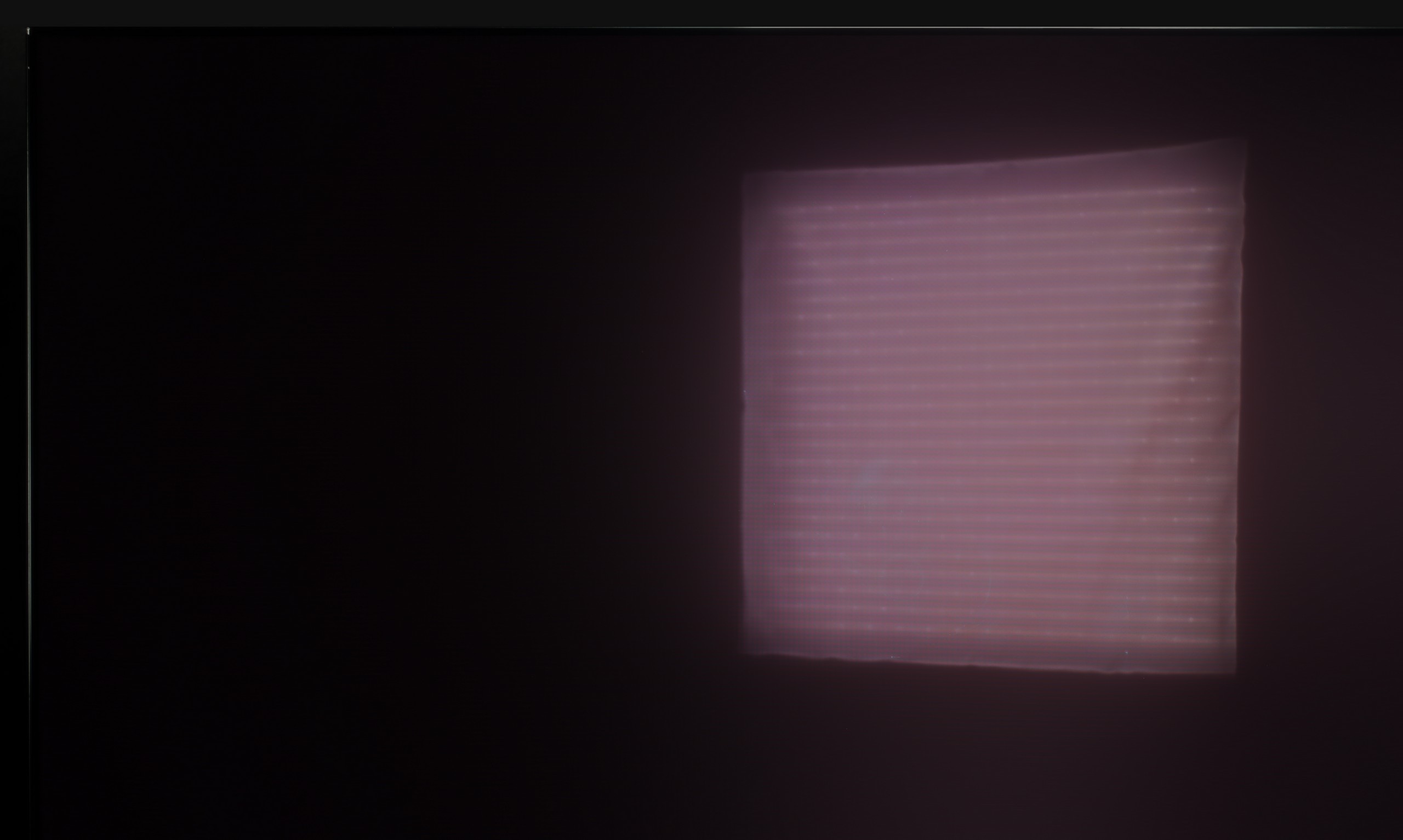


Matrix brightness
Average luminance SDR
Samsung S85F OLED: 317 cd/m2
Sony X85L: 571 cd/m2
The performance of the television Sony X85L during the day is quite decent. Its satin screen coating handles light reflection moderately well, meaning that in bright rooms there can be some glare, but it is not bothersome enough to significantly interfere. The brightness in SDR mode at 570 nits is sufficient for comfortable TV viewing during the day, even with natural light coming in through the windows. This ensures that colours remain vivid and the picture is clearly visible, making the television suitable for everyday use.
We really liked the saying “there's no rose without a thorn” and it fits perfectly with QD-OLED display televisions. Especially when we look at their behaviour in strongly sunlit conditions. As you may notice, in very intense light, the surface of the panel can take on a slightly cherry hue. The effect is subtle in the case of the S85F, but in extreme lighting conditions, the black can perform a little worse than in WOLED panels. However – and this “however” is key here – QD-OLED significantly better suppresses direct light reflections. This means that reflections will be less bothersome, and the picture will maintain clarity even when something bright reflects off the screen. You win some, you lose some.
As for brightness, the S85F is a moderately bright OLED. It is not a model designed for extremely sunny living rooms. If you are planning to place it in a very bright room, we recommend considering blinds or placing it in a location that at least partially protects it from direct light.
Details about the matrix
Subpixel Structure:

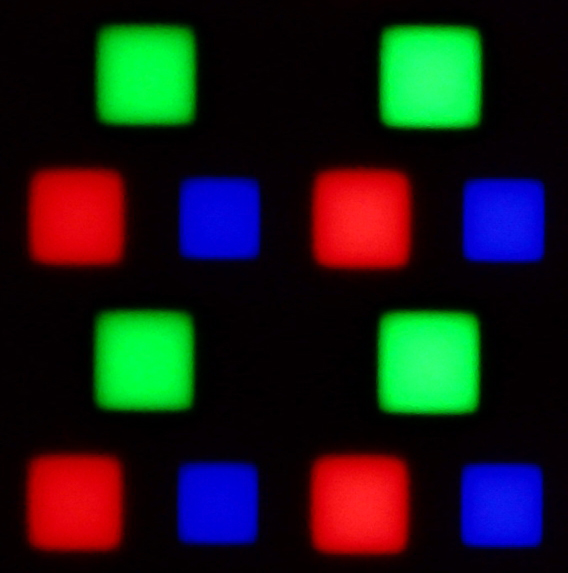
Panel uniformity and thermal imaging:


TV features
7.7/10
7.3/10
- HDMI inputs2 x HDMI 2.0, 2 x HDMI 2.1 48Gbps0 x HDMI 2.0, 4 x HDMI 2.1 48Gbps
- Other inputsRCA (Chinch)Toslink (Optical audio)
- OutputsToslink (Optical audio), eARC (HDMI), ARC (HDMI)Toslink (Optical audio), eARC (HDMI), ARC (HDMI)
- Network InterfacesWi-Fi 2.4GHz, Wi-Fi 5GHz, Ethernet (LAN) 100MbpsWi-Fi 2.4GHz, Wi-Fi 5GHz, Ethernet (LAN) 100Mbps
- TV receptionDVB-T, DVB-T2, DVB-S, DVB-S2, DVB-CDVB-T, DVB-T2, DVB-S, DVB-S2, DVB-C
Classic features:
- Recording to USB (terrestrial TV)
- Recording programming
- Picture in Picture (PiP)
- RF remote control (no need to aim at the screen)
- Backlit remote control
- Teletext
- Audio only mode
- Bluetooth headphones support
- Simultaneous Bluetooth headphones & TV audio
Smart features:
- AirPlay
- Screen mirroring (Windows Miracast)
- Voice search
- Voice search in native language
- Ability to connect a keyboard and mouse


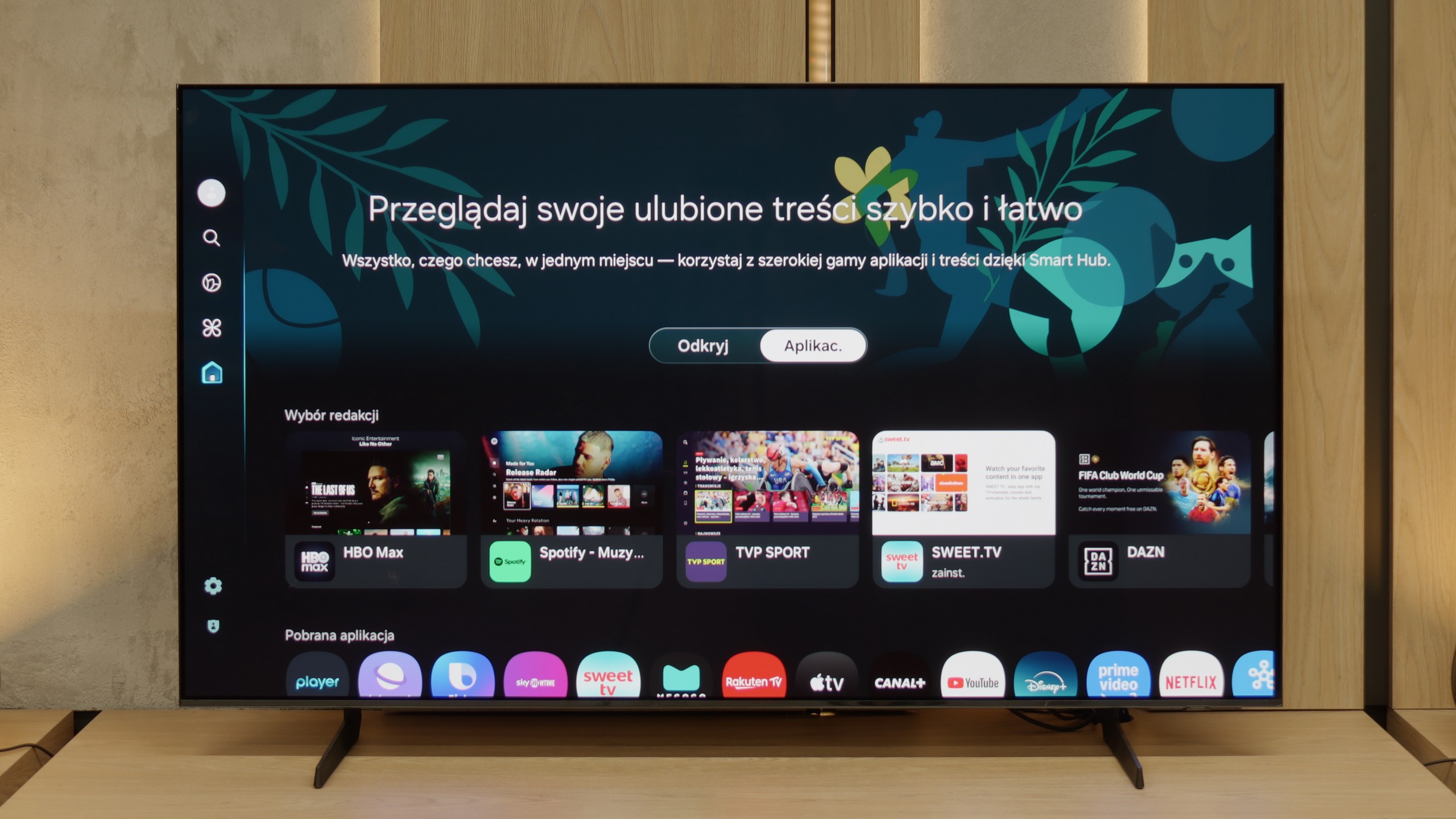
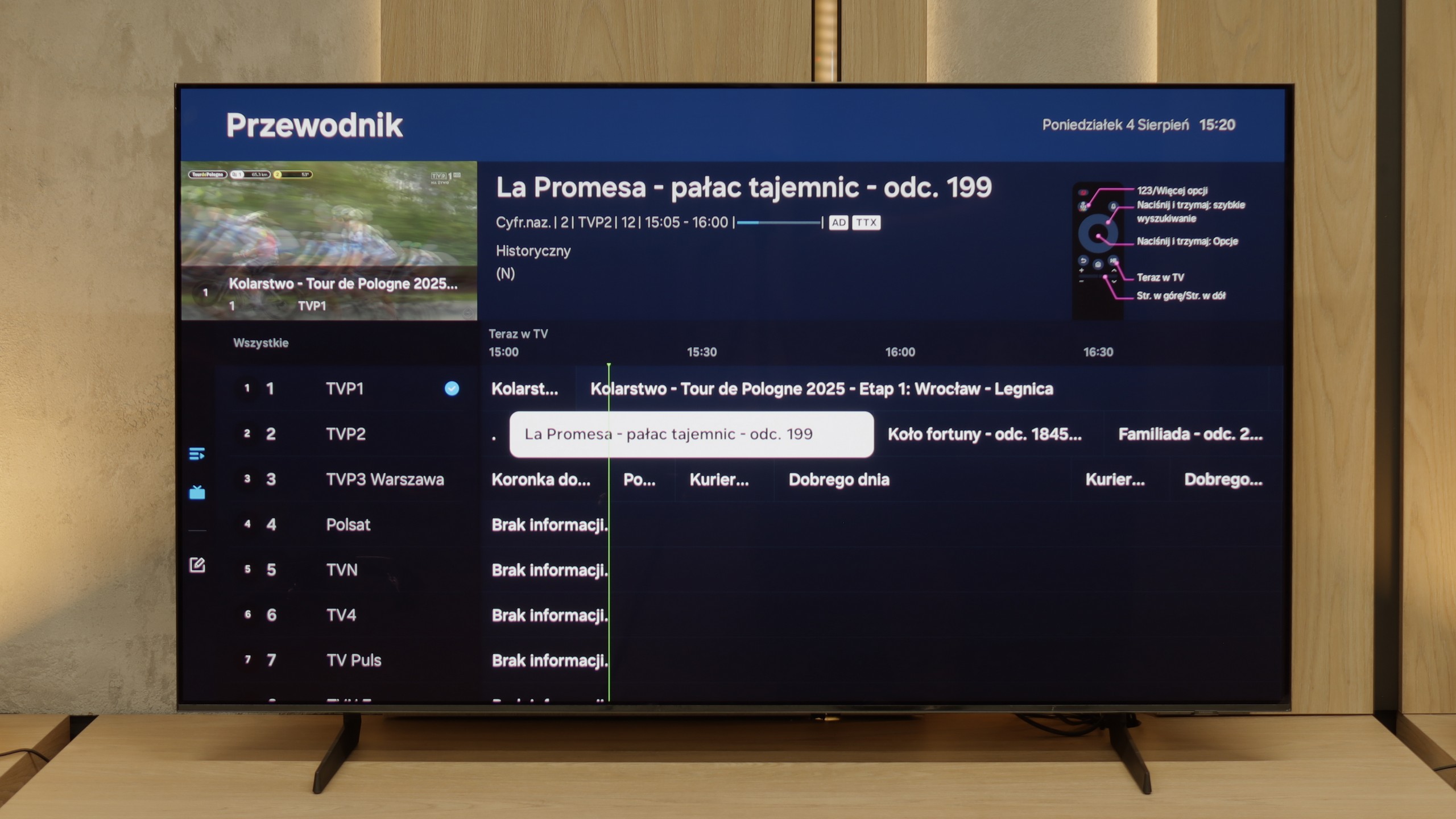

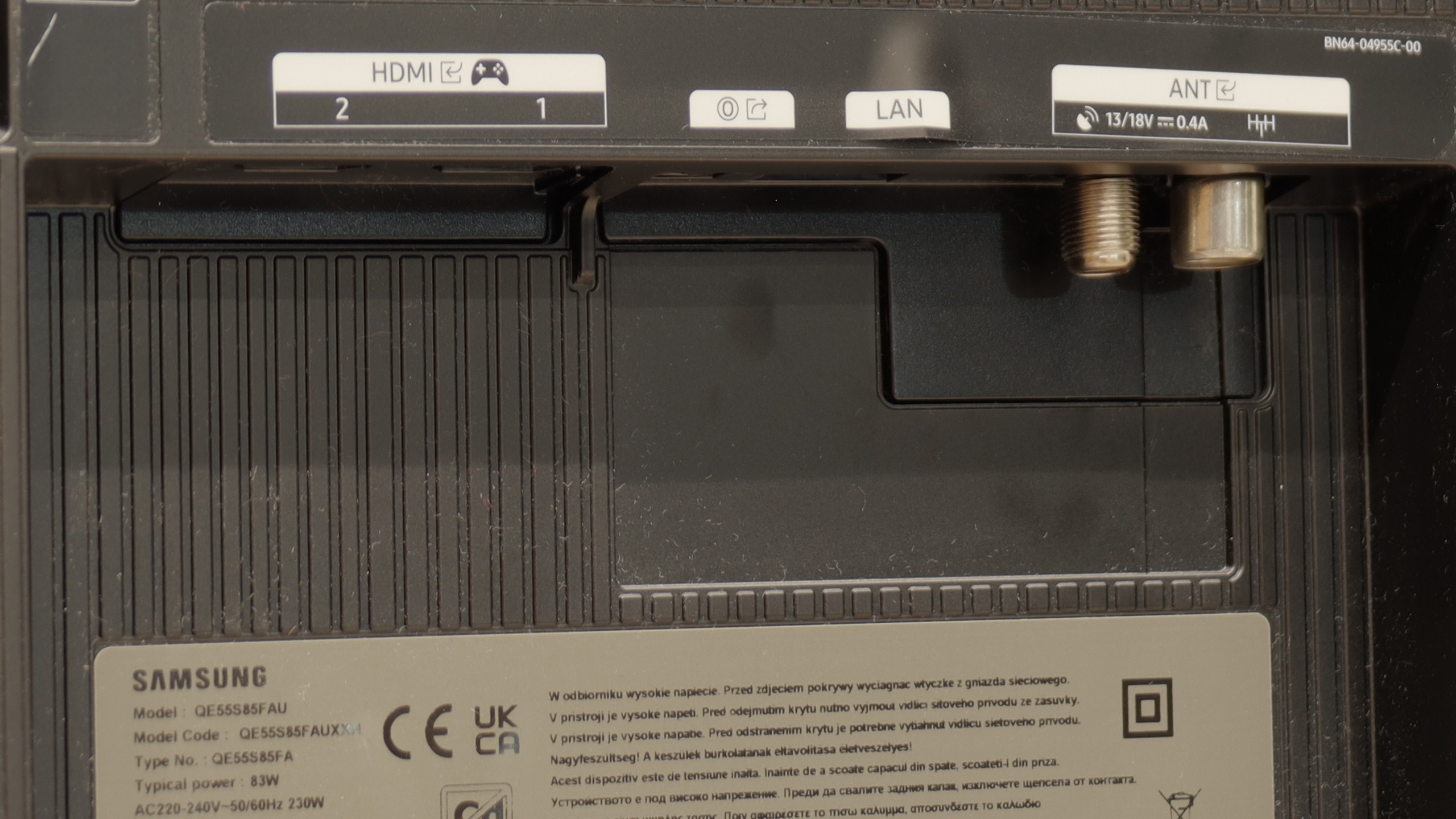
Sony X85L runs on the Google TV system, which is a substantial advantage for many users. The television offers wide access to applications, and using streaming platforms is smooth and user-friendly. The interface is intuitive and easy to master, allowing quick switching between applications and searching for favourite content. Google TV allows for personalisation of the home screen, enabling each user to tailor it to their preferences. The Google Assistant further enriches the experience by offering voice control and quick changes to settings or searching for films without the need for a remote.
In terms of user features, Sony X85L offers many useful options. The television has the capability to record programmes, which is a significant convenience for those wanting to watch their favourite content at any time. AirPlay support allows for seamless content streaming from Apple devices, which iPhone and iPad owners will appreciate. Additionally, thanks to the built-in Bluetooth, various devices such as headphones or keyboards can be connected. However, one of the shortcomings is the PiP (picture-in-picture) function, which may disappoint users who prefer multitasking on screen.
The design of the Sony X85L television, while perhaps not among the thinnest, is solid and elegant. The metal stand with adjustable feet is one of its stronger points, allowing the height and width of the television to be adapted to various furniture and spaces. This practical solution enhances the interior and adds a modern character to it.
Classic TV Features of the S85F
The S85F was not really designed with fans of traditional television in mind. There’s no PiP feature (which is a bit surprising as Samsung usually offers it) nor the ability to record programmes to USB from the built-in tuners. Fortunately, the basics are present – teletext and a clear channel guide – so for regular, everyday viewing, that is more than enough. The included remote control, although simple and lacking a numeric keypad at first glance, allows you to control multiple devices. This means that when connecting, for example, a Canal+ decoder, you don’t need to have two remotes on the table – the one for the television is quite sufficient.
SmartTV S85F: Tizen
The smart part is a completely different story. Tizen is one of the most advanced operating systems in televisions. It operates smoothly, supports all popular internet functions – from screen mirroring, through AirPlay, to voice search. The strongest feature of Tizen is its integration with the SmartThings app, which can serve as the control centre for the entire home. Of course, like any closed system, Tizen has its limitations – for example, in the form of a smaller app library compared to GoogleTV. However, looking at the current list of available apps, it is hard to pinpoint anything that might actually be missing.
Playing files from USB
8.7/10
9.1/10
Supported photo formats:
Maximum photo resolution:


Sony X85L easily handles playback of most popular file formats from USB, which is a big plus for those who often access external content. However, it should be mentioned that there is a small downside – the built-in player does not allow for changing the font colour in subtitles, which may be troublesome for some. Fortunately, thanks to the extensive Google TV system, users have a wide range of options. Alternative media players can be easily installed, offering more personalisation options.
The built-in media player in the S85F performs excellently – practically everything you put on a USB drive or hard disk will be played back without the slightest problem. Minor shortcomings appear only in the handling of some less popular photo formats, but for the vast majority of you, this will be more than sufficient. So, it can be confidently stated that for home use, the built-in player is more than solid.
Apps
9.6/10
8.7/10














































Sound
6.9/10
7.2/10
- Maximum volume-80dB
- Dolby Digital Plus 7.1
- Dolby True HD 7.1
- Dolby Atmos in Dolby Digital Plus (JOC)
- Dolby Atmos in Dolby True HD
- DTS:X in DTS-HD MA
- DTS-HD Master Audio
The sound in Sony X85L is good – it is clear across the entire range, allowing enjoyment of both dialogues and music. The bass, though light, is noticeable and adds some depth to the overall sound. However, it should be emphasised that this is a subjective assessment – some may find such a sound profile satisfying, while others might need additional audio equipment to fully experience stronger tones and a more spacious sound.
Built-in speakers with a power of 20 W on paper may not make a big impression, but in practice, the S85F can surprise. It sounds really pleasant, and at times you can even catch a subtle bass, which is not a given in this class of speakers. The TV does not support DTS format, which has unfortunately become the standard for most manufacturers by 2025. A nice surprise, however, is the support for Dolby Atmos. Of course, talking about "spatial" sound in the case of two speakers placed at the bottom of the casing would be a slight exaggeration, but it's good that Samsung offers such a feature in this model at all.
Acoustic Measurements
No acoustic data
80dBC (Max)
75dBC
